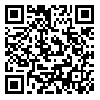BibTeX | RIS | EndNote | Medlars | ProCite | Reference Manager | RefWorks
Send citation to:
URL: http://sjsph.tums.ac.ir/article-1-157-en.html
Background and Aim: Cigarette smoking is a global problem, but is decreasing in most developed countries. Reports from the East Mediterranean show that unlike the 5 other WHO regions, cigarette smoking has not decreased in this particular zone. There is a vital need to address the problem, especially in the adolescent population. This qualitative study looks at the motives behind the smoking tendency in boys aged 13-15.
Materials and Methods: The study consisted of 6 focus group discussions performed in Tehran orientation (intermediate) schools participants were male students aged 13 to 15 years. Purposeful sampling was used to draw in participants who were willing and able to take part in the group discussions. Each group was composed of 6-8 students, whose voices were recorded to determine themes and subthemes.
Results: Family and social factors have a more prominent role in creating the smoking tendency compared to individual factors. The most important elements are family history of smoking, having friends who smoke, poor parental control, conflicts at home, divorced parents, failure to consult with parents, easy availability and relative cheapness of cigarettes, and lack of information.
Conclusion: Serious attention must be paid to the social and family factors in the initiation of the smoking habit. Social and political institutions must come up with effective programs to control the social and family factors that have a role in creating the smoking tendency.
Received: 2007/08/11 | Accepted: 2008/02/19 | Published: 2013/08/10
| Rights and permissions | |
 |
This work is licensed under a Creative Commons Attribution-NonCommercial 4.0 International License. |





